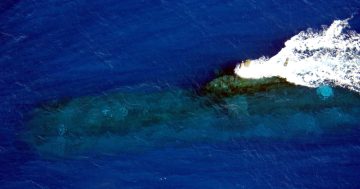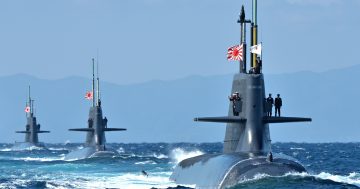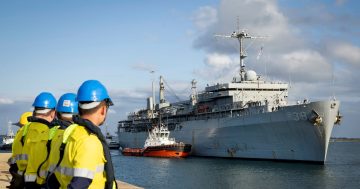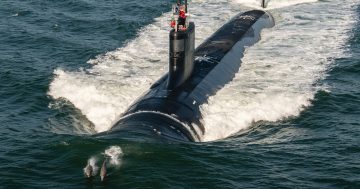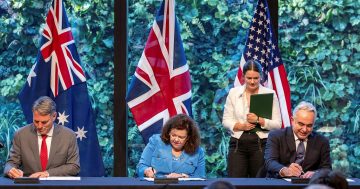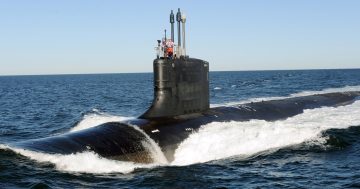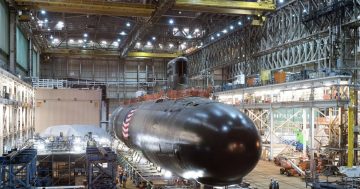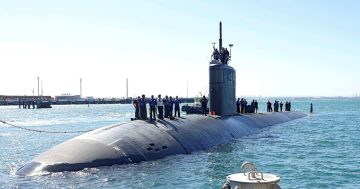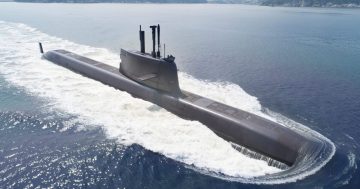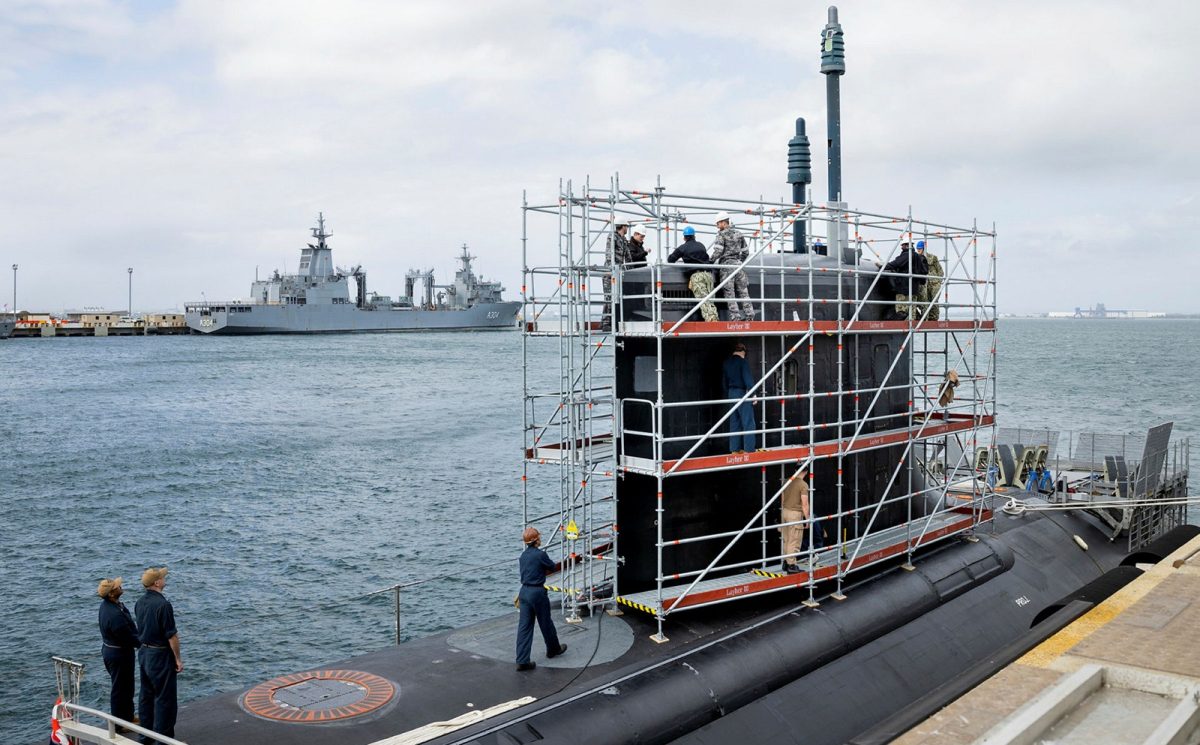
Maintenance of the US Navy’s USS Hawaii is underway in WA with US and Australian workers under Pillar I, but it is Pillar II where most of the AUKUS opportunities might lie. Photo: ADF.
This month marks the third anniversary since the surprise announcement that Australia, the UK and the US would form AUKUS, the agreement to share technologies to supply Australia with nuclear-powered submarines and other advanced capabilities.
In that time, many milestone boxes have been ticked, but more hurdles must be overcome to reach this ambitious goal.
In a joint statement earlier this week, Prime Minister Anthony Albanese, his UK counterpart Sir Keir Starmer and US President Joe Biden said that, under Pillar I of the agreement, the three countries were steadily building Australia’s capabilities to steward and operate its own fleet of conventionally armed, nuclear-powered submarines (SSN) from the early 2030s.
“The United Kingdom and the United States welcomed Australian naval officers and sailors into their submarine training schools and embedded Australian personnel into the UK Ministry of Defence and US naval shipyards,” they said.
“Our nations have made enormous strides towards the establishment of a rotational presence of US and UK SSNs at HMAS Stirling in Western Australia as early as 2027.
“Increased visits by US SSNs to Australia have supported steady progress in Australian workforce development, and, in August 2024, Australian personnel demonstrated their progress through participation in the first maintenance activity conducted on a US nuclear-powered submarine in Australia.”
Australia has also selected a team of ASC and BAE Systems to build SSNs in Adelaide from the late 2030s, has chosen a site for the shipyard, and has nominated ASC to sustain the boats in Australian service.
But many commentators feel it is the Pillar II Advanced Capabilities part of AUKUS where the real opportunities for Australia lie, especially with the seeming inability of US and UK shipyards and their supply chains to increase production capacity to a level where they can free up SSNs for Australia under Pillar I.
Pillar II covers capabilities such as cyber, hypersonics, autonomous systems, quantum, space, AI, undersea systems, directed energy, and other technologies that are just emerging.
And for the first time, the AUKUS partners have formally recognised that other countries not necessarily part of the trilateral agreement may be allowed to participate in some of these Pillar II programs on a case-by-case basis.
“In April 2024, our Defence Ministers announced principles for additional AUKUS Pillar II partner engagement on specific projects where new partners could contribute to, and benefit from, AUKUS,” the communique reads.
“Following initial consultations this year and leveraging Japan’s deep technical expertise, AUKUS partners and Japan are exploring opportunities to improve interoperability of their maritime autonomous systems as an initial area of cooperation.
“Recognising these countries’ close bilateral defence partnerships with each member of AUKUS, we are consulting with Canada, New Zealand and the Republic of Korea to identify possibilities for collaboration on advanced capabilities under AUKUS Pillar II.”
At this early stage, it’s unclear what this will mean for each country’s strict export control laws, many of which have been relaxed between the three AUKUS partners but remain in place for the other countries, except perhaps Canada. But on face value, the partners seem willing to extend that openness.
“To promote innovation and realise the goals of AUKUS, Australia, the UK and the US have implemented momentous amendments to our respective export control regimes, including reforms to the US International Traffic in Arms Regulations (ITAR),” the statement adds.
“These critical reforms will facilitate billions of dollars in secure, licence-free defence trade and maximise innovation across the full breadth of our defence collaboration and mutually strengthen our three defence industrial bases.”
Unfortunately, the rest of the joint statement is short on detail so we don’t really know how far advanced discussions on possible collaborations are.
We can only hope they’re further along than they’re letting on because, while Pillar I will be a slow and difficult phase to realise, innovations are being made almost every day on many of the Pillar II capabilities in both the partner nations and by the prospective collaborators.


